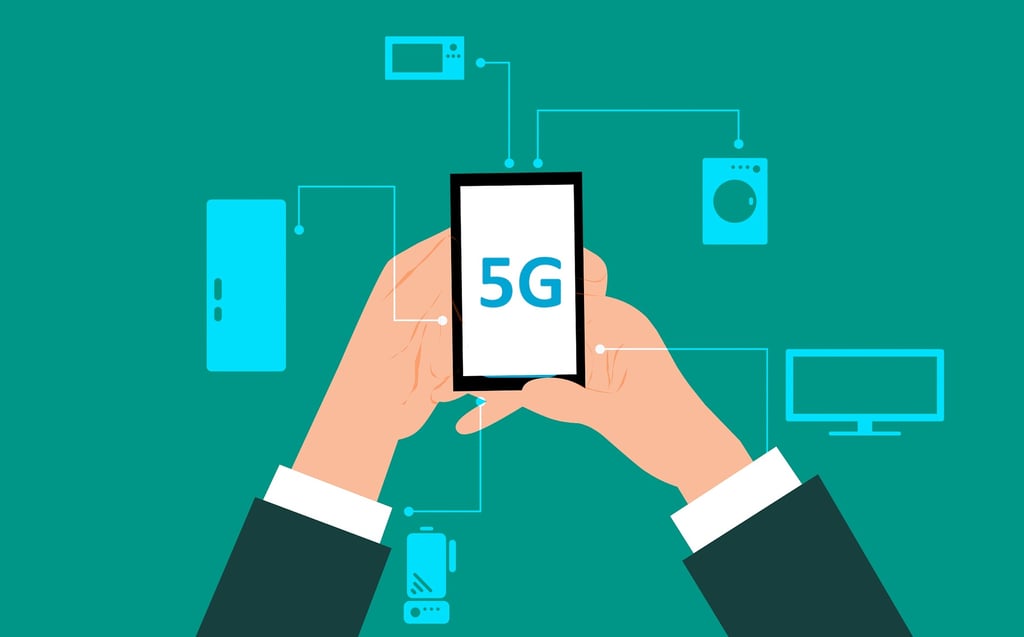
What is a Private 5G Network? | Enterprise Networking Planet
IoT, artificial intelligence, machine learning, and other smart technologies have become an integral part of modern enterprise operations, but in order to make these technologies work as intended, organizations have to find a network that provides them with the appropriate latency, storage, and security features. The private 5G network, a private local area network (LAN) […]

IoT, artificial intelligence, machine learning, and other smart technologies have become an integral part of modern enterprise operations, but in order to make these technologies work as intended, organizations have to find a network that provides them with the appropriate latency, storage, and security features. The private 5G network, a private local area network (LAN) created via 5G cellular technologies and edge device connections, is one networking tool that enterprises are turning toward to meet a higher network traffic demand and real-time communication requirements. Read on to learn how private 5G works and the advantages it provides to smart industries that require quick and reliable network coverage.
Also Read: Utilizing Private Cellular Networks for Enterprise Connectivity
Although private 5G cellular technology works the same way on private 5G networks as it does on public 5G networks, its purpose is entirely different when dedicated to a singular bandwidth for one organization’s people. With public 5G networks, a mobile network operator (MNO) owns and manages both the spectrum and the infrastructure behind 5G. All customers who are on services with the MNO more or less receive the same level of access to the network.
With private 5G networks, companies typically purchase wireless spectrum from an MNO or government entity, and then they are tasked with managing access and features of the infrastructure solely for their enterprise users who access the private network. Many companies choose to invest in private 5G networks because they can develop a dedicated bandwidth for their team, avoiding the lower latency that comes with high public traffic, as well as the potential security concerns associated with wider public access.
Especially in efforts to globalize smart technology development, private 5G networks are a key advantage. They make it possible to bring dedicated 5G connectivity to any location where an enterprise is willing to invest in the technology and infrastructure to set up the network. Even in areas of the world where public 5G is not widely available, organizations can use privatized 5G technology and spectrum services to access 5G.
Private 5G networks are set up in much the same way as public 5G networks; however, the primary managers for the network are members of the company’s team rather than the mobile network operators who manage more generalized public networks. In both types of 5G networks, edge devices are the primary transmitters of service and information. They use wireless spectrum to send data to network infrastructure like local cellular base stations and other access points. These physical points in the network then transfer data to the enterprise’s internal private network through a wired connection. To reverse the process, network technologies can also transmit data back to edge devices.
There are two primary steps involved in setting up a private 5G network:
It’s important to note that devices involved in private 5G connections must meet certain criteria:
Also Read: Intelligent Connectivity: What Combining 5G, AI and IoT Means for Different Industries
Private 5G networks cannot provide their low-latency services to enterprises until they’ve invested in the appropriate mobile connections and equipment:
Also Read: The Future of Fixed 5G Networks is Now
Smart manufacturers and other industries primarily implement private 5G networks because they require ultra-low latency, but companies of all backgrounds are watching the private 5G pioneers to see how they fare. So far, private 5G users have enjoyed these benefits:
5G provides the processing capacity and ultra-low latency for smart technologies. This has made it possible for organizations to develop smart factories with predictive maintenance, humanoid robotic operations, new IoT devices, advanced AI/ML tools, and other innovations.
Privatized network space helps highly competitive industries to manage large amounts of network traffic and big data transmission, all without having to deal with the interference of public traffic. The isolated design is also inherently more secure, preventing non-company users from easily accessing the service.
Because private 5G effectively provides the same benefits as public 5G on a more focused scale, enterprise users will reap typical 5G benefits, including increased bandwidth, high data rates, low latency, high security, reliability, and scalability. Enterprises are able to enjoy these 5G benefits wherever they’re willing to set up 5G infrastructure, even if that area of the globe does not currently have public access to 5G.
More on 5G and Security: Approaches to Cybersecurity in 5G-driven Enterprise Networks
The average company has not yet dipped their toes into the private 5G pool, but many companies that are working to develop advanced supply chain and consumer service technologies have started to manage their own 5G network. The majority of current private 5G experiments are carried out by organizations in these categories:
Enterprises that are building infrastructure or products that require extremely low latency. This is particularly common in the manufacturing industry, where smart factories, digital twins, edge devices, AR, and IoT devices are being developed and used to manage operational processes. However, other industries, such as healthcare, are beginning to test out this technology for precise, real-time operations like robotic surgery.
Organizations with a large number of mobile users are starting to use private 5G so that they can improve network traffic speeds for users and also more securely manage the types of traffic that occur on their network. Some of the facilities that are receiving dedicated 5G equipment currently include airports, major amusement parks, large universities, and stadiums, all places where thousands of users might need dependable network access simultaneously.
Again, the average organization does not yet want or even need the dedicated services of a private 5G network. But much like previous generations of cellular technology, industries of all kinds are watching closely to see if the cost of implementation will be worth it for their own business model.

Shelby Hiter is a writer with more than five years of experience in writing and editing, focusing on healthcare, technology, data, enterprise IT, and technology marketing. She currently writes for four different digital publications in the technology industry: Datamation, Enterprise Networking Planet, CIO Insight, and Webopedia. When she’s not writing, Shelby loves finding group trivia events with friends, cross stitching decorations for her home, reading too many novels, and turning her puppy into a social media influencer.

Enterprise Networking Planet aims to educate and assist IT administrators in building strong network infrastructures for their enterprise companies. Enterprise Networking Planet contributors write about relevant and useful topics on the cutting edge of enterprise networking based on years of personal experience in the field.
Property of TechnologyAdvice. © 2025 TechnologyAdvice. All Rights Reserved
Advertiser Disclosure: Some of the products that appear on this site are from companies from which TechnologyAdvice receives compensation. This compensation may impact how and where products appear on this site including, for example, the order in which they appear. TechnologyAdvice does not include all companies or all types of products available in the marketplace.